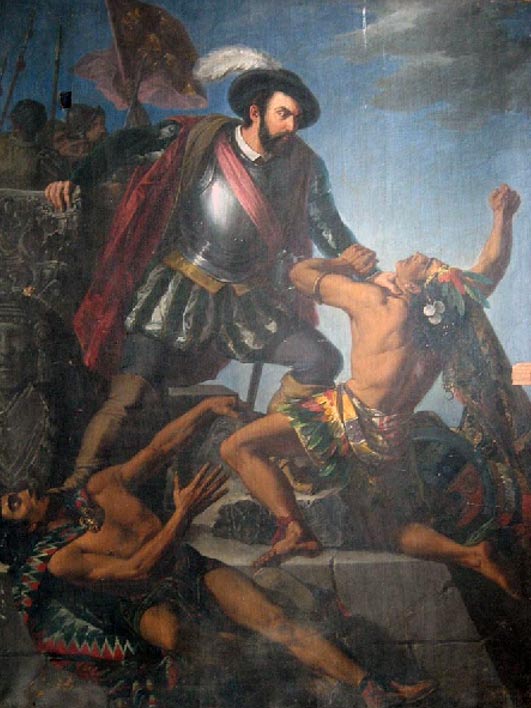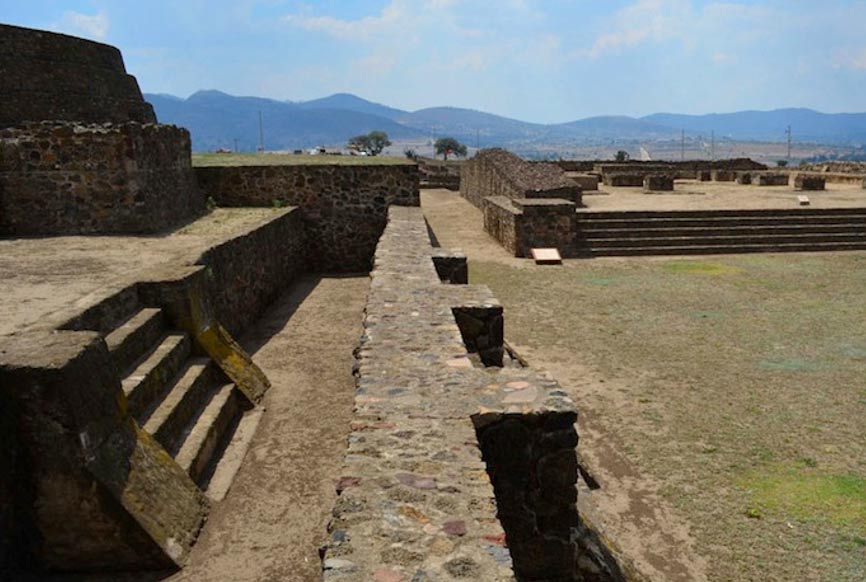Archaeological site in Mexico reveals sacrifice and cannibalization of Spanish conquistadors
Excavations at the Zultepec-Tecoaque archaeological site in Tlaxcala, Mexico, have revealed that indigenous Acolhuas peoples captured a caravan of 550 conquistadors and their allies in 1520, kept them in captivity, and ate them over a period of nine months. And new research suggests that these acts were not random; it seems the Acolhuas people were re-creating their creation myths.
Who were the Acolhuas’ Sacrificial Victims?
Hernán Cortés, the Spanish usurper of Mexico at the time, was in the caravan to Tenochtitlan but rode ahead to help put down a rebellion in Mexico City before the Acolhuas party struck. The caravan comprised people of Spanish, Cuban-African, and Mexican- Indian descent, whom the Acolhuas viewed as invaders that needed to be stopped.
Cortés first arrived in Mexico with a party in 1519. The people in the caravan were the second Spanish party to arrive. They had 45 foot soldiers, 15 conquistadors and at least 350 Maya and other Indian allies of the Spaniards, including about 10 children, along with animals.
- 80 Days of Cuitlahuac: The Unforgettable Impact of a Late Aztec Emperor
- The Real Reason Ancient Indo-Europeans Carried Out Human Sacrifice
- Ancient Death Pit of Sacrificed and Butchered Humans Found in England
Once they had captured the people in 1520, the Acolhuas people sacrificed the invaders and ate them, along with the animals, with the exception of the pigs – they were apparently viewed as unsavory and were killed and thrown into a well.

Hernan Cortés killing indigenous people of the Americas. (Public Domain)
Why did the Acolhuas Commit the 1520 Sacrifice?
“In the living spaces the remains of members of the caravan were found with signs of having been sacrificed in different rituals that were conducted over six months to commemorate various festivities marking the Aztec calendar …” explained a press release from the Mexican Institute of Anthropology and History .
In 2015 archaeologist Enrique Martinez suggested that “The purpose of the sacrifices was to ask the deities protecting against the arrival of strangers.” However he now believes “The inhabitants of Zultepec were re-creating creation myths” instead.
According to Phys.org, “one Spanish male was dismembered and burned to replicate the mythical fates of Aztec-era gods, according to one myth known as "El Quinto Sol," or Fifth Sun.”
The villagers of Zultepec-Tecoaque in what is now called Tlaxcala State put some of the skulls of the foreigners, especially the Spanish women, on display. After Hernan Cortés found out about the case, he ordered the village destroyed and the Acolhuas villagers who lived there slaughtered.

In Aztec culture, skulls were often put on display on a skull rack (tzompantli). (Public Domain)
Hiding the Evidence
The archaeological dig, led by Enrique Martinez and Ana Maria Pacheco Jarquín, found that villagers apparently tried to hide the fact that the Spaniards, Cubans, and their Indian allies had been taken to their village by dumping incriminatory foreign objects into a well at the site and then they apparently left town.
The site was under excavation since 1933, but the 2015 press release states that it was only by then that the archaeological team made the discovery of a cistern in the housing units in which the Indians hid many objects so Cortés’ men could not find them. Among the European items found in the cistern were a horse spur, a cameo, rings, glazed ceramic figures, and iron nails. In previous digs, about 200 European objects were found in 12 other cisterns that had been explored in other stages of the excavations.
Enrique Martinez ruled out slavery as a motive for capturing the caravan and added that his team concluded the group was in captivity only for slaughter. The villagers apparently rebuilt part of the village to accommodate the 500 foreigners during the period of June 1520 to March 1521. The villagers built new rooms for themselves and imprisoned the captives in their old quarters, the 2015 press release stated.
- The Fall of Tenochtitlan - Truly the End of the Aztec Empire?
- The Many Burials of Hernan Cortes: Locating the Gravesite of a Conquistador
- The Controversial Role of La Malinche in the Fall of the Aztec Empire: Traitor or Hero?

Some of the broken ceramics that were found in one room, apparent evidence of abandonment of the village. (Photo by Meliton Tapia/INAH)
After the Spanish attacked Tecoaque, some villagers fled and some were killed. The archaeologists found in one of the houses a conglomeration of fragmented pre-Hispanic ceramics, including everyday vessels and a sculpture of a dog.
“The researcher explained that it is clear evidence of an untimely abandonment,” the press release said, “For some reason the Acolhua population concentrated all ceramics in that space and when they fell the walls of the room were broken and covered for centuries. The event must have happened to learn that the Spanish military were going to punish them. Then also they rushed to hide the evidence of the caravan in reservoirs.”
Top Image: Zultepec-Tecoaque archaeological site in Tlaxcala, Mexico. The location where the Acolhua practiced human sacrifice and cannibalized Spanish conquistadors.
By Mark Miller
















